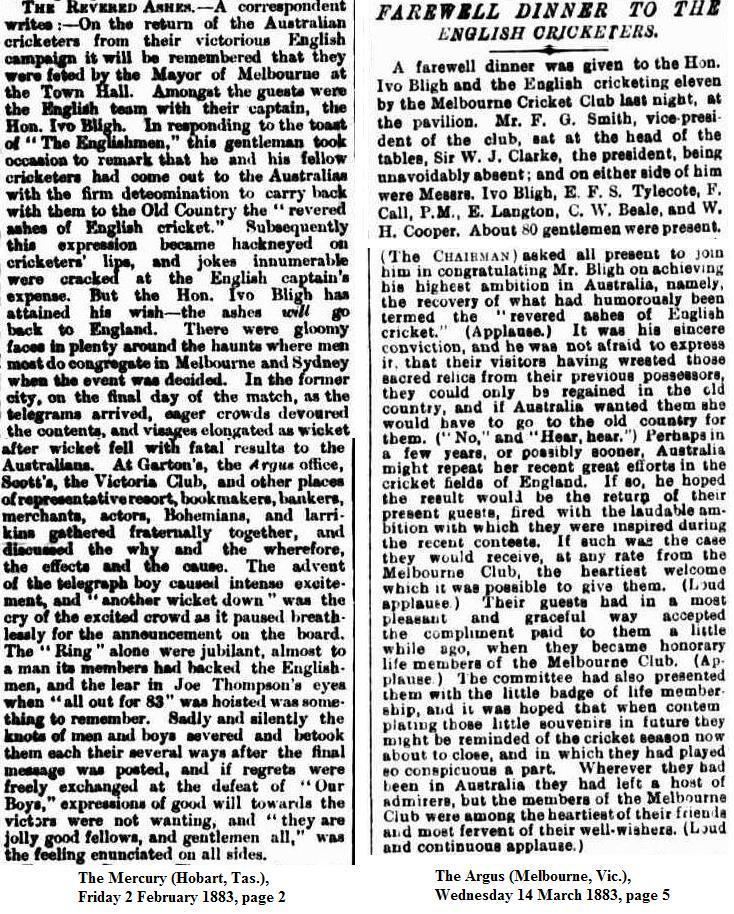 | ||
The England national cricket team toured Australia and Ceylon in 1882–83.
Contents
The team, captained by Ivo Bligh, was on a quest "to recover those Ashes", a reference to the famous RIP notice that was published in the aftermath of England's defeat by Australia at The Oval during the previous English season.
Originally, three Tests were arranged and England won two of these after losing the first. Although the actual sequence of events has never been completely confirmed, it was after England won the third Test that Ivo Bligh was somehow presented with a small urn which is believed to contain the ashes of a burnt bail. He brought this back to England and it is now the most famous exhibit in the museum at Lord's Cricket Ground. England and Australia have been contesting these mythical Ashes ever since.
The "fourth Test" of this tour was arranged ad hoc after the original series had been completed.
Players
England was captained by Ivo Bligh and had Edward Tylecote as its specialist wicket-keeper, the other players being Billy Bates, Dick Barlow, Allan Steel, Charles Leslie, Walter Read, Charles Studd, Fred Morley, Billy Barnes, George Vernon and George Studd.
Australia was captained by Billy Murdoch and had Jack Blackham as wicket-keeper. Other players to represent Australia were Billy Midwinter, Alec Bannerman, George Bonnor, Tom Horan, Percy McDonnell, George Giffen, Harry Boyle, Edwin Evans, Hugh Massie, Eugene Palmer, Tom Garrett and Fred Spofforth.
Ceylon
The team used Colombo as a stopover during its long sea voyage and played two matches against local sides in October 1882 that were not first-class. This was the first time that an overseas team visited Ceylon.
